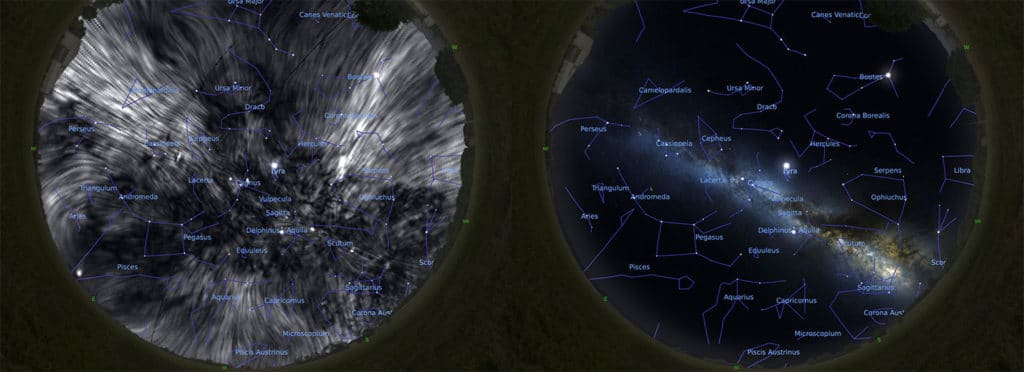Dr. Jennifer West, a Research Associate at the Dunlap Institute for Astronomy and Astrophysics, recently discovered that our solar system might be surrounded by a magnetic tunnel seen in radio waves. She thinks that two bright structures on opposite sides of the sky are connected and are made of rope-like filaments.
These two structures are known as the ‘North Polar Spur’ and ‘the Fan Region.’ The connection of these two structures looks like a tunnel around the solar system.
The structures, which are about 1000 light-years long, consists of charged particles and a magnetic field. Located about 350 light-years away from us, the structures are shaped like long ropes.
Using a computer model, West determined how the radio sky would look from Earth if varying the shapes and location of the long ropes. It was this new perspective that helped her to match the model to the data.
West said, “A few years ago, one of our co-authors, Tom Landecker, told me about a paper from 1965, from the early days of radio astronomy. Based on the crude data available at this time, the authors (Mathewson & Milne) speculated that these polarized radio signals could arise from our view of the Local Arm of the Galaxy, from inside it.”
“That paper inspired me to develop this idea and tie my model to the vastly better data that our telescopes give us today.”

To further explain this, West uses the Earth’s map as an example. The North pole is on the top, and the Equator is through the middle – but of course, we can always re-draw that map with a different perspective. The same is true for the map of our Galaxy.
West said, “Most astronomers look at a map with the North pole of the Galaxy up and the Galactic center in the middle. An important part that inspired this idea was to remake that map with a different point in the middle.”
Dr. Bryan Gaensler, a professor at the Dunlap Institute and an author on the publication, said, “This is extremely clever work. When Jennifer first pitched this to me, I thought it was too ‘out-there to be a possible explanation. But she was ultimately able to convince me! Now I’m excited to see how the rest of the astronomy community reacts.”







No comments:
Post a Comment